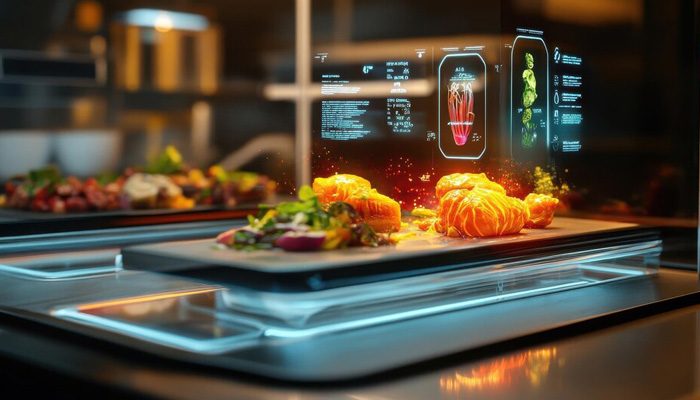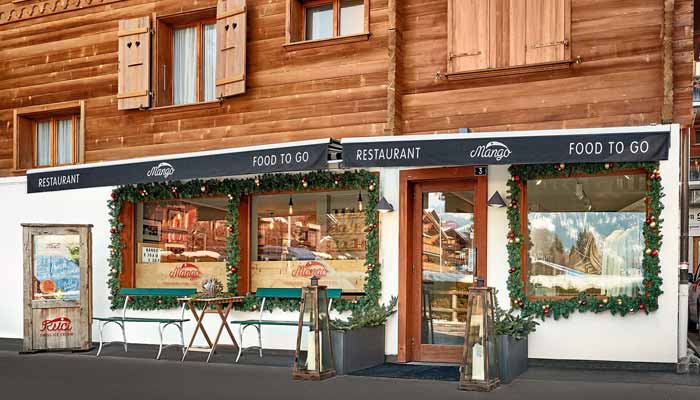Revolutionizing Dining: Advanced Restaurant Technology Trends for 2025
In 2025, the restaurant industry is set to embrace a new era of technological advancements that promise to reshape the way we experience dining. For industry leaders striving to create unforgettable experiences, adopting cutting-edge restaurant technologies has become essential. These innovations not only enhance operational efficiency but also elevate customer satisfaction, positioning your establishment as a pioneer in the competitive food service sector.

Restaurant technology refers to innovative tools and systems that streamline restaurant management processes, from order-taking and reservations to kitchen operations and customer interactions. These solutions cater to the evolving needs of the industry, optimizing efficiency and enhancing overall service quality. For instance, online menus allow customers to browse offerings, place orders, and make payments directly from their smartphones, delivering a seamless dining experience.
Dynamic menus powered by artificial intelligence (AI) transform static options into personalized, adaptable experiences. These menus analyze customer preferences, dietary restrictions, past orders, and external factors like weather or local events. Integration with supply chain data ensures that menus are updated based on ingredient availability, reducing waste and enhancing customer satisfaction.
Robotic servers are revolutionizing the hospitality landscape by blending technology with traditional service. Equipped with sensors and navigation algorithms, these robots efficiently deliver food to tables, ensuring accuracy and timeliness. This futuristic approach enhances efficiency while adding a unique touch to the dining experience.
Blockchain technology ensures transparency and traceability in the food supply chain. By recording transactions at every stage—from farm to table—blockchain helps identify contamination risks, minimize waste, and maintain high-quality standards. This fosters trust among customers and promotes sustainable practices.
VR and AR technologies redefine customer engagement by offering immersive dining experiences. Interactive virtual menus, 3D dish visualizations, and virtual cooking demonstrations allow customers to connect with food in innovative ways. Restaurants can also use VR to create simulated cooking experiences, enhancing the overall appeal.
Voice-activated systems streamline ordering by enabling hands-free interactions. Advanced natural language processing (NLP) algorithms ensure seamless communication, making the process intuitive and inclusive for all customers, including those with disabilities. Devices like Amazon Alexa exemplify how voice technology enhances accessibility and convenience.
QR code-based digital payments have transformed transaction processes. Customers can scan a QR code to access menus, place orders, and complete payments without physical interaction. This technology improves hygiene, reduces wait times, and enhances transparency by displaying taxes and final costs upfront.
Biometric technologies leverage unique physical characteristics to offer tailored services. From customized menus to preferred seating arrangements, biometrics enhance personalization. Additionally, loyalty programs integrated with biometric data streamline rewards and promotions, fostering stronger customer relationships.
Cloud kitchens—also known as ghost kitchens—focus on delivery and takeout services, eliminating the need for dine-in spaces. These kitchens optimize operations through technology, reducing overhead costs while maintaining high service quality. With the rising demand for delivery, cloud kitchens are reshaping the restaurant industry.
The integration of 5G technology enables real-time connectivity and data sharing across devices. Smart kitchen appliances with IoT sensors monitor food storage, track inventory, and maintain optimal conditions for perishable items. This ensures ingredient freshness, reduces waste, and enhances operational efficiency.
Automated systems, including robotic chefs and precision cooking devices, are gaining popularity. These technologies ensure consistent food quality and speed up preparation times, allowing restaurants to handle high demand during peak hours.
Green technologies, such as energy-efficient appliances and waste management systems, promote sustainability. Implementing solar-powered systems or water-saving devices not only reduces environmental impact but also appeals to eco-conscious customers.
AI-driven reservation platforms optimize table management by analyzing customer patterns and predicting peak hours. These systems reduce wait times, improve resource allocation, and enhance the overall customer experience.
- Streamlined Operations
Interactive software solutions manage orders, inventory, and kitchen workflows seamlessly, minimizing errors and improving efficiency.
- Enhanced Customer Experience
Technologies like online reservations, personalized recommendations, and contactless payments create a hassle-free dining environment, boosting customer satisfaction.
- Data-Driven Decisions
By analyzing customer preferences, operational performance, and market trends, restaurants can make informed decisions to optimize offerings and strategies.
- Transparency and Sustainability
Blockchain and sustainable practices ensure ethical sourcing and waste reduction, building trust with customers and investors alike.



